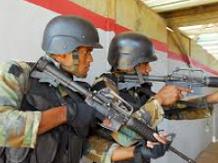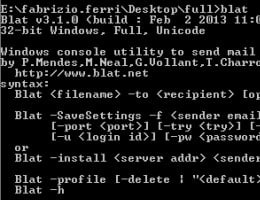 A small group of shock forces that specializes in raiding enemy territory is called a command . The concept is also used with reference to the soldiers who make up this type of forces .
A small group of shock forces that specializes in raiding enemy territory is called a command . The concept is also used with reference to the soldiers who make up this type of forces .
Commandos, in this framework, are units dedicated to special operations that take place behind enemy lines. To carry out their task, the members of the commandos receive specialized training that allows them to face all types of risk situations.
Commando missions may consist of intelligence activities (infiltrating or taking photographs, for example), hostage rescue, infrastructure control, and sabotage.
Command or command , on the other hand, is the name given to combat units led by a single high-ranking officer. The US military , for example, divides its forces into several major commands.
“Commando” (or “Commando” , in its original language) is the title of a film that starred Arnold Schwarzenegger in 1985 . The film, which was directed by Mark L. Lester , was a great success worldwide.
The idea of command is also used in the field of computing . In this case, a command is an instruction that a person gives to a system for it to execute.
Depending on the environment , the way in which the user indicates the command to the computer system varies; For example, you can do it when you need it, through the command line interface , or by using a function call as part of a program code. The command line (also known as command line interface ) is a method by which people can give instructions to programs by entering a line of text.
At this point it is important to make a distinction between this and two other concepts that, despite having different meanings, are usually used as synonyms:
* command interpreter : sometimes called a command interpreter or with the English term shell , it is a computer program that gives the user an interface to access the services of the operating system. Depending on the case, the interpreter can be text lines , graphics or natural language ;
 * console emulator : also called terminal emulator , it is a program that allows you to simulate the operation of a computer terminal on various devices. Typically, its features include input/output redirection, process control, reading and listing files, and a command language for writing batch sequences.
* console emulator : also called terminal emulator , it is a program that allows you to simulate the operation of a computer terminal on various devices. Typically, its features include input/output redirection, process control, reading and listing files, and a command language for writing batch sequences.
The user does not always order the system to execute a single command, but can tell it to execute a series of commands, which can be included in a script file. This allows automating repetitive tasks that must be carried out throughout the day: it would be useless to require a person to write the same lines of text hundreds of times during their work shift, especially if there is no possibility for the computer to make a mistake in this step.
One of the most interesting features of the commands is the possibility of indicating arguments or input parameters to achieve behavior different from the default . In DOS operating systems (a family used in personal computers originally designed for IBM computers, where it was very popular), arguments are usually indicated with a slash "/" followed by a letter, while in Unix (an operating system developed by AT&T in 1969), are located after a single or double hyphen.
On Macintosh computers , finally, Command is a combination key, similar to Ctrl on PCs.
